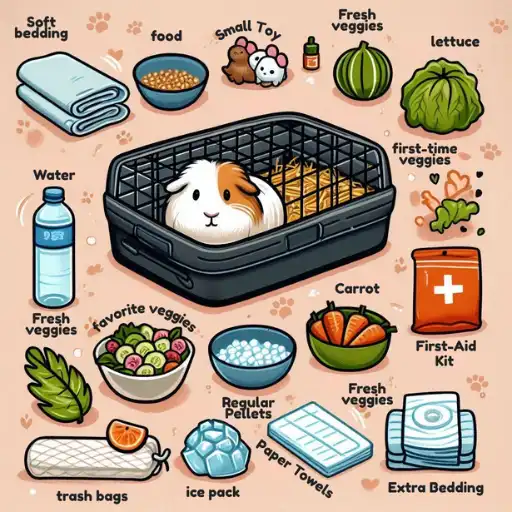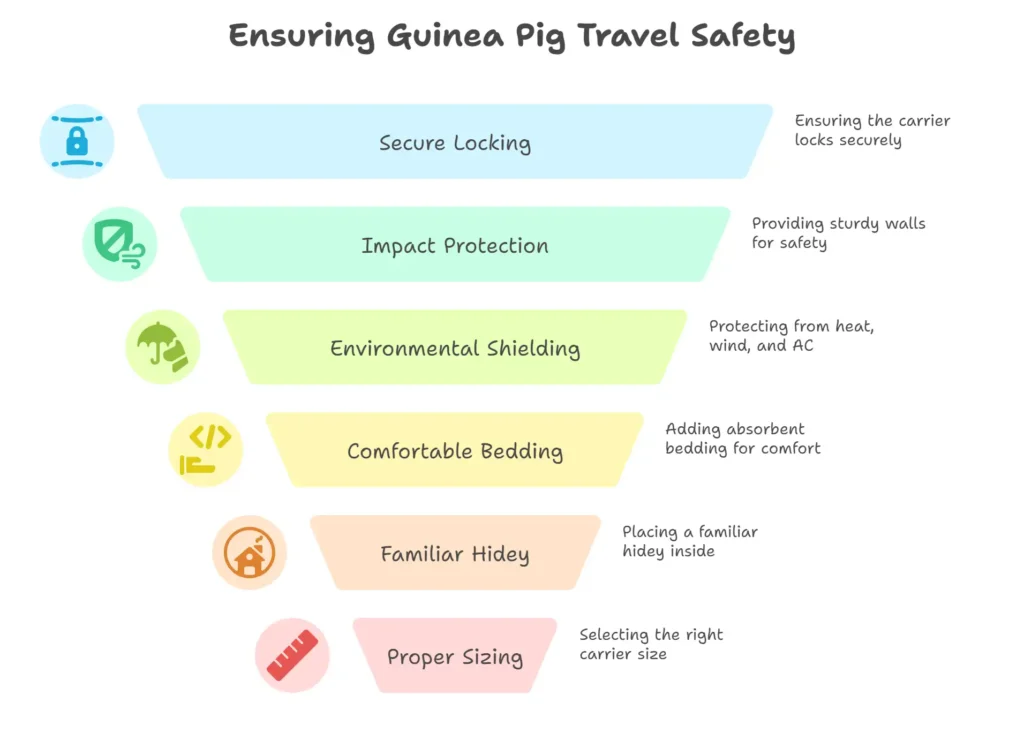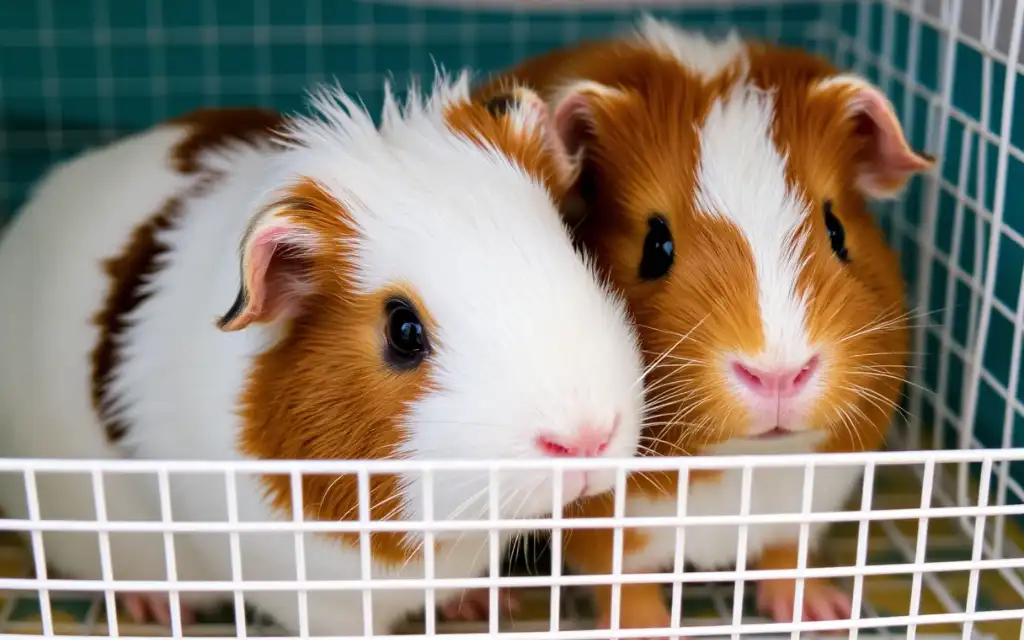Taking your guinea pig for its first car trip can be quite stressful for piggy parents. It is not very easy to tackle these tiny furballs as they cannot sit in one place for a long time. You will notice that your piggy is squeaking or is stressed out after some time while traveling in a car.
However, with the right preparation, you can make the journey with your pet safe and manageable. This guide covers travel tips for car trips with guinea pigs to make your journey smoother and transform it into a confident adventure.
Why do guinea pigs get stressed out during car trips?

As these tiny rodents are prey animals by nature so, sudden movements, loud noises, unfamiliar smells, and vibrations can be dangerous situations for them. At home, they live in a cozy and safe environment. So, changes in their routine can cause stress.
Extremely stressful situations can cause illnesses like overheating, dehydration, and gastrointestinal stasis. So it is important to manage stress and make their car trips safe and comfortable.
Preparation is needed before a car trip with your guinea pig
Here’s the pre-trip preparation checklist you need to go through before traveling with your piggy.
Vet visit
It is mandatory to schedule a check-up with your vet before any significant trip with your beloved pet.
A health checkup can help you relax that your piggy is healthy and ready for travel. A vet may give you advice on stress management and how to handle an extremely anxious piggy.
Piggy-go-bag essentials
While preparing for a trip in a car with your furry companion, you should carry a secure travel carrier.

Absorbent bedding, unlimited hay, food (fresh veggies and regular pellets), water, a hidey house, comfort items ( a small piece of soft bedding), and an emergency kit ( trash bags, disinfectant wipes, extra beddings, or any medications).
A safe carrier
You need to introduce your guinea pig to the carrier for vet trips months before your journey. To make it easier for the pet to adjust to the carrier while traveling, you should leave the carrier out in their play area with an open door weeks before the journey.
Line the carrier with comfy fleece and sprinkle their favorite treats inside. You should encourage nap time within it.
In the beginning, go for very short trips. You can also carry your piggy in the carrier and go around the house for a few minutes, then return it to the cage.
How to set up the safest travel carrier?

Choosing the safest travel carrier is important while going on a car trip with your guinea pig.
Safety is important
The safest choice for car travel with your piggy is with a hard-sided plastic carrier. It provides security by locking securely and thus preventing escapes.
These carriers provide sturdy walls that shield from impacts and loose objects. These plastic carriers protect them from direct heat, wind, and AC. Always avoid cardboard boxes, open-top containers, or wire cages.
The setup should be comfortable
To make the carrier cozy for the piggy, line the bottom with the absorbent bedding of your choice.
To make it smell like home, you can add a piece of fleece and place their familiar small hidey inside the carrier. It is better not to add items that could become projectiles.
Use a proper-sized cage
The carrier or the cage should be big enough so that your piggy gets enough space to turn and move.
For 1 to 2 piggies, a carrier around 18 inches long can be perfect. However, don’t use an extra-large cage that they get tossed during turns or stops.
Road trip survival guide

Here are tips for mastering the journey and handling the drive smoothly and safely.
The carrier should be secured
Securing the carrier using the car seat belt on the back seat is vital. To ensure the carrier won’t slide, thread the belt through the handles of the carrier or its body.
Never let the carrier sit loose on the floor or seat. Also, avoid placing it in the front seat due to the airbag risk.
To prevent your piggy from rolling forward during braking, always position the carrier sideways in the direction of travel.
Controlling climate
The ideal temperature for a guinea pig should be around 65 to 75 degrees Fahrenheit. Your piggy can die within minutes as they get extremely overheated easily.
So, never leave your tiny pet alone in a parked car. Temperature can increase shockingly fast, with cracked windows even on mild days.
Avoid stressors
Drive smoothly when traveling with your piggy in a car. Try to avoid sharp turns, sudden stops, and speeding over bumps.
Avoid podcasts or blasting music as they can stress out your beloved pet. Talk calmly near the carrier.
Provide water and food
Keep unlimited hay inside the carrier at all times on the go. You can offer hydrating veggies like lettuce and cucumber as a treat at every pit stop and before departure.
Water should be offered at every stop. If your piggy refuses to drink from the bottle, then use a bowl for the same.
Pit stop essentials
When going on a long journey, you need to stop every 1.5 to 2 hours for 15 to 20 minutes to make your piggy relax.
During this time, you can offer veggies or water to your furry companion to prevent lethargy. Always park your car in a shaded, safe area. Never allow your piggy to roam loose in the car.
You can use a secure travel playpen and set it up outside the vehicle if you need to give them space during a long break.
When to Worry While Traveling with Guinea Pigs in the Car?

Take it seriously if you notice signs of severe illness and stress like labored breathing, not eating or drinking for several hours, wheeking or continuous loud screaming, extreme lethargy, and diarrhea.
In these situations, take immediate action and look for a safe place to pull over. Check that your piggy is not overheating.
Offer their favorite veggies and water gently. If there is no such response or if the symptoms persist, then contact your vet right away. It is important to have your vet’s contact number while going on trips with guinea pigs.
Extra tip for beginners
It is good to do a few short practice trips of 5 to 10 minutes just near a park or around the block before going for a long journey with your piggy.
Offer treats to the furballs every time you return home. This will help your guinea pig get comfortable and used to going out for trips and help build positive associations.
Recap
Proper planning and safety are the most important factors that need to be considered for car trips with guinea pigs.
Also, focus on minimizing stress, getting a secure carrier, and climate control to make the journey smoother for your piggy.
With the right knowledge and love, you can make the tiny rodents feel confident while traveling in a car.
